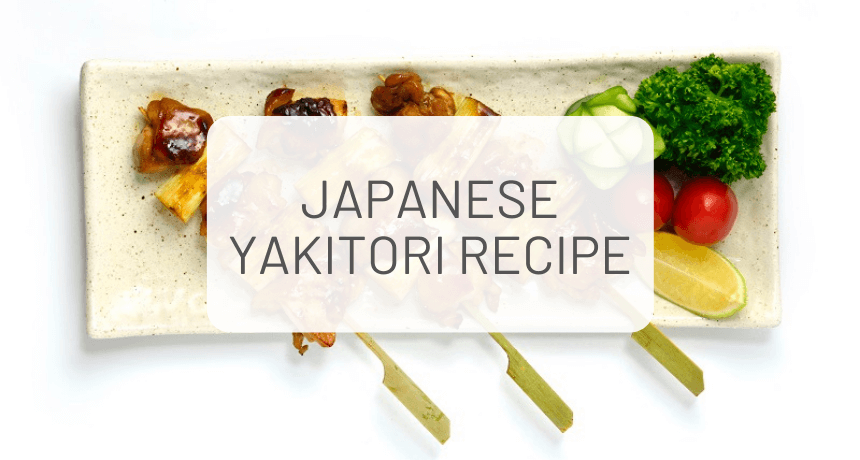
</title><meta name="robots" content="noindex">The Perfect Yakitori Recipe Made Simple
Are you looking to up your BBQ game this summer? Introduce your friends and family to some classic Japanese grilled food: yakitori (焼き鳥). Literally “grilled chicken”, these skewers are served all year round in Japan’s restaurants, and popular with every generation.
The skewers are glazed in a delicious sweet sauce called tare, and often mixed with scallions. There is no match for this simple and flavorful combo! You don’t need much to prepare them, nor to grill them, and in no time you’ll have impressed everyone sitting at the time!
Before we dive into the details of the preparation method, let’s get started with some background information!
Yakitori in Japan
The Japanese are proud of their cuisine, and although overseas Sushi and Ramen might be the most popular, in Japan it’s much more common to go to a local izakaya (bar/restaurant) and order some fresh yakitori. It’s not uncommon for the menus to specify the origin of the chicken, including the breed and the region it was raised, as well as what it was fed!
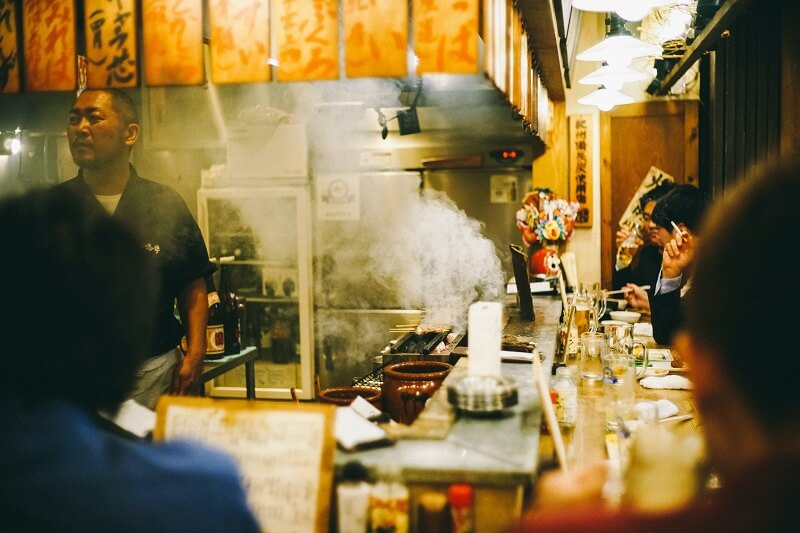
Source: Unsplash
In Japan, yakitori includes all parts of the chicken. Yes, all parts. Whereas in the west we have a tendency to focus mostly on chicken breast or thigh, in Japan they also commonly livers and gizzards!
Here is a list of a few popular skewers to order at a Japanese izakaya:
- Chicken Breast (mune, むね)
- Chicken Thigh (momo, もも)
- Chicken Thigh & Scallion (negima, ねぎま)
- Chicken Wings (tebasaki, 手羽先)
- Chicken Tender (sasami, ささみ)
- Chicken Skin (kawa, 皮)
- Chicken Tail (bonjiri, ぼんじり)
- Chicken Cartilage (nankotsu, 軟骨)
- Chicken Heart (hatsu, ハツ)
- Chicken Liver (rebā, レバー)
- Chicken Gizzard (sunagimo, 砂肝)
3 Quick Tips for Making Delicious Yakitori
- To have a more juicy meal: use boneless, skinless chicken thighs
- To avoid the skewers to burn: place the bamboo skewers in water for 30 minutes before adding the ingredients
- To enhance the flavor: go for 1 piece of chicken followed by a big pieces of scallion, and keep going
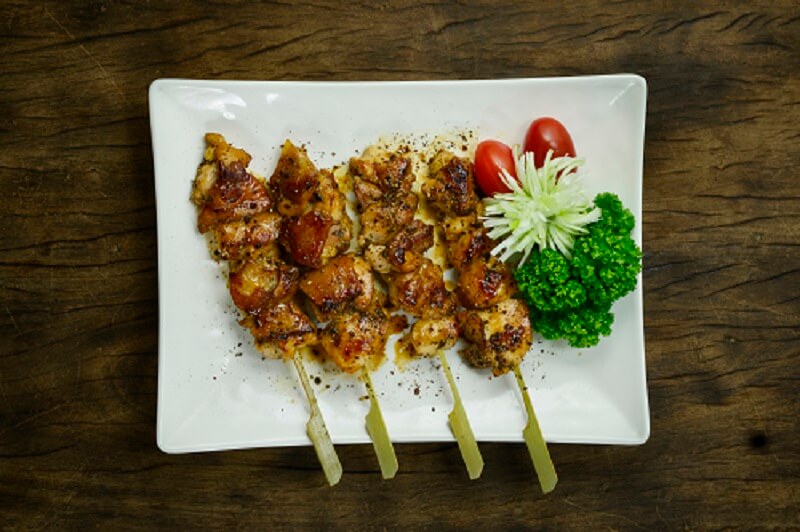
Source: Freepik
The Seasonings (Shio or Tare)
Simplicity is key to a successful and yummy yakitori. That’s why most of the time, there is not much choice of sauce offered. Japanese people will pick from two toppings: salt (shio) or yakitori sauce (tare).
Tare is made of soy sauce, mirin, sake, and sugar. A lot of the flavor from yakitori comes from the sauce, and it’s important to get it right. There are several alternatives as to how to mix the ingredients, depending on how sweet or salty you want it to be. But a well balanced version usually satisfies every pallet. If you feel slightly adventurous, you can try adding other ingredients such as ginger, tomatoes or even… wasabi.
Going naked is also a solution. That way you retain the full taste of the grilled chicken, it’s juice and the crunch of the scallions. Just sprinkle some salt on top before placing them on the fire!
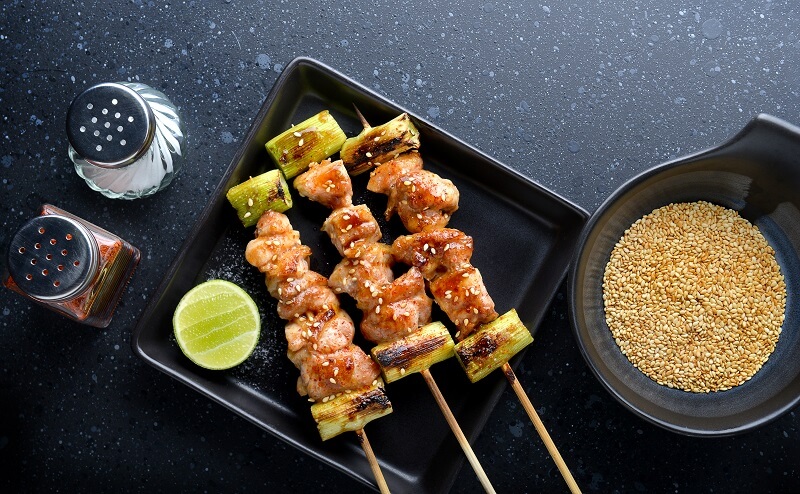
Source: Freepik
Bamboo Skewers for Yakitori
Nothing prevents you from using metal skewers if that’s what you have at home. However, in Japan, the skewers used for yakitori are made from bamboo. Actually, they have a very specific shape, that resemble that of a gun with a long barrel, and gave them their name “teppogushi” (literally“gun skewer”). They have a flat end to make it easier for you to hold without getting your fingers full of sauce, and it prevents them from rolling around your grill too.
If you want to give those a try, you can find them at Japanese supermarkets or Amazon.
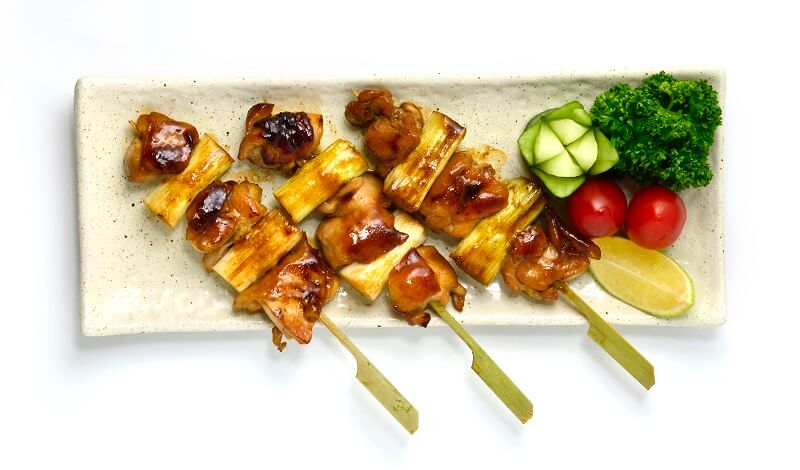
Source: Freepik
Easy Oven Method
If you prefer to have a smoke-less experience, you can get your skewers ready in the oven. Of course, you won’t have the same feeling for it, and the smokiness from the charcoal or wood fired grill does add to the flavor, but you can’t go wrong with an oven.
Again, the first step is in the prep of the sauce: simmer all the ingredients until the sauce is reduced by about a third (soy sauce, mirin, sake, garlic, ginger, sugar and red pepper). While it’s simmering you can cut your chicken into bite sized pieces, and add them and the scallions to the skewers. Get your oven to temperature and cover your yakitori with your homemade tare sauce before putting them in. Shouldn’t take longer than 15 mins at the right temperature (500ºF or 260ºC).
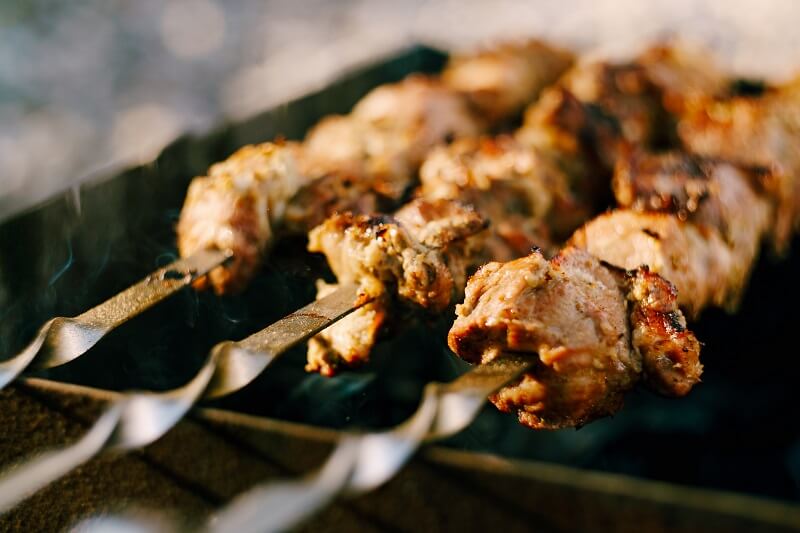
Source: Freepik
Itadakimasu!
There you go, now you know how to prepare your own summer BBQ yakitori at home and impress your friends and family! Easy to prepare, easy to grill, and easy to eat: the perfect cocktail party recipe!

